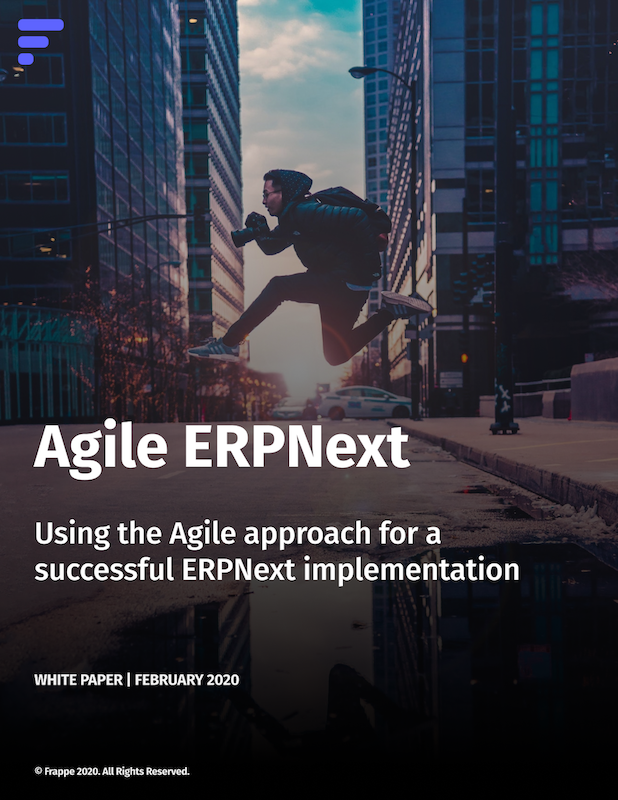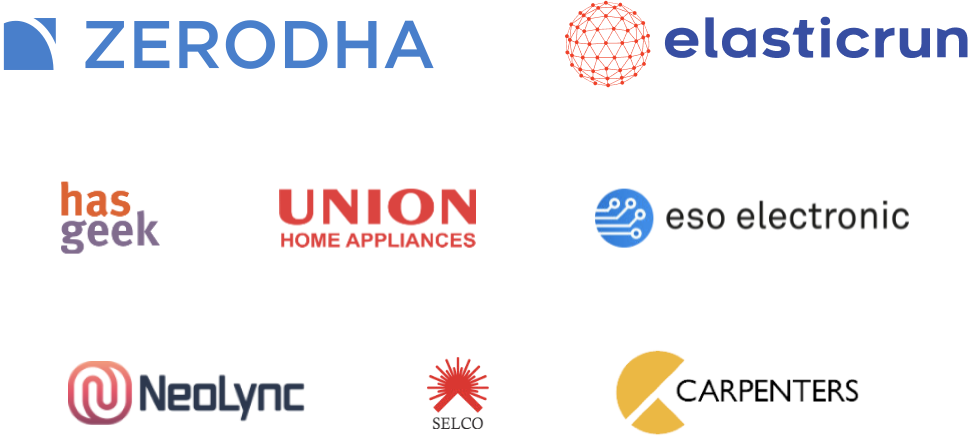Agile Implementation Whitepaper
Wondering which ERP implementation methodology is the best? In this business whitepaper, we talk about our experience and success of Agile implementation method.
Agile ERPNext
There are two common methods to approach ERP implementation: agile and waterfall. Waterfall takes a linear approach and the next step is dependent on the previous one. Agile on the other hand is very dynamic and allows continuous improvements and interactions with multiple areas of an ERP implementation. In the end, the method chosen contributes to the success or failure of an ERP implementation.
In practice, Agile saves a lot of time and has various other benefits that reduce the overall chances of failure. While this whitepaper mainly talks about using the Agile methodology for implementing ERPNext, the concepts remain universal and you can take away some points by reading it.
Agile Implementation Summary
72% of all ERP implementations fail. The major reasons are lengthy timelines and costs adding up during implementation. It’s common for even small and medium-sized companies to endure lengthy implementation timelines with no result in sight. The traditional ‘Waterfall’ strategy is the culprit. It’s an old system of the legacy software era. In waterfall, the requirements are gathered and documented first, which may take months on its own, then the implementation begins. We quickly learned that this method increased the ERP implementation cost, money, and energy.
Consequently, Frappe adopted (and suggests) the Agile ERP implementation strategy quickly to implement our flagship product - ERPNext. Across 850+ ERP implementations, we’ve learned that Agile is far superior to Waterfall and delivers a higher success and satisfaction rate. Agile methodology gets the ball rolling so that our clients can start using ERPNext features in production as soon as possible. The goal is to start using ERPNext in the vanilla form first and add the customizations later.
An argument can be made that at any given point, internal resources are much more likely to work hard towards a successful implementation all while being more accountable. ERPNext is fairly simple with a modern UI and does not carry the excess UX baggage like legacy systems. With some efforts and our freely available content resources, self-implementing ERPNext using Agile is fast and straightforward.

Download white paper
Table of contents
Background
1. What is Agile?
1.1 Start Small and Iterate
1.2 Adapt with each iteration
1.3 Add resources as required
2. Why Agile?
3. Implementation Plan
3.1 Project Champion Identification
3.1.1 Project Champion
3.1.2 Identify the Team
3.1.3 Escalation Matrix
3.2 Understanding the Current System
3.3 Gap Analysis
3.4 Configure first
3.4.1 Users, Roles and Permissions
3.4.2 Branding and Formats
3.4.3 Data Migration
3.4.4 Setting up master data
3.4.5 Feature-Scenario Mapping
3.5 Customize Later
3.5.1 Script Automation
3.5.2 API Integration
3.5.3 Non-standard workflow
3.6 Customization Strategy
3.6.1 Configuration: Product Champion
3.6.2 Core Feature: Work with Frappe Dev
3.6.3 Branding & Reports: Partner
3.6.4 Custom Workflow and Objects: Partner
3.7 Start with a single subsidiary/unit
3.7.1 Why Accounting?
3.8 Building Integrations to fill gaps
3.9 Configuration and UAT (module wise)
3.10 Deployment
3.11 Sign off and Go Live
3.12 Post Go-Live Support
4. Agile Benefits
4.1 Low Risk
4.2 Low Disruption
4.3 Early Value Realization
4.4 Low Cost
4.5 Build Momentum
4.6 Flexibility
5. Example: Reliance
6. Typical Contract
Conclusion
Credits
ERPNext is the world's best 100% Open Source ERP Solution
Open Source Software for Modern Businesses
Accounting
Get a real time view of your cash flow. Full fledged accounting module covering every aspect of book keeping.
HR & Payroll
Manage full employee life cycle right from onboarding, payroll, attendance, expense claims, assets to separation.
Manufacturing
Effectively maintain and manage multilevel bill of materials, production planning, job cards & inventory.
Sales & Purchase
Increase productivity and lower costs by managing your sales and purchase cycles, from purchase to sales orders
CRM
Win and retain more customers by optimising sales process. Track leads, opportunities and send the quotes on the go.
Projects
Deliver both internal and external projects on time, budget and profitability. Track tasks, timesheets and issues by project.
Helpdesk
Deliver a better service experience with an intuitive issue tracker and integrated knowledge base.
Asset Management
Maintain and Manage details of assets, their movement, value adjustment and depreciation.
Website
ERPNext comes with a fully featured content management with blogs, web pages and forms.
Integrate with your favourite Apps
ERPNext has a host of built-in integrations that help your business take-off faster

Integrate with your favourite Apps
ERPNext has a host of built-in integrations that help your business take-off faster


